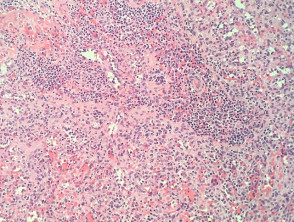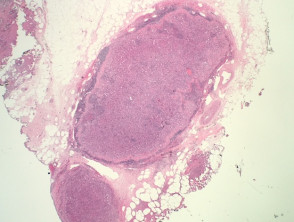Introduction
Splenosis may present in the skin following splenic trauma and subsequent spread of benign splenic tissue into surrounding structures.
Histology of splenosis
In splenosis, the histopathology shows normal splenic tissue, usually located in the subcutis (figures 1, 2). Spleen can be recognised by the presence of red pulp (composed of venous sinusoids allowing passing of red blood cells) and white pulp (composed of sheaths of lymphoid cells around arteries).
Splenosis pathology
Special studies for splenosis
None are generally needed.
Differential diagnosis for splenosis
Other diagnoses to be considered include a dermal lymph node: this lacks the components seen in splenic tissue (red and white pulp).

